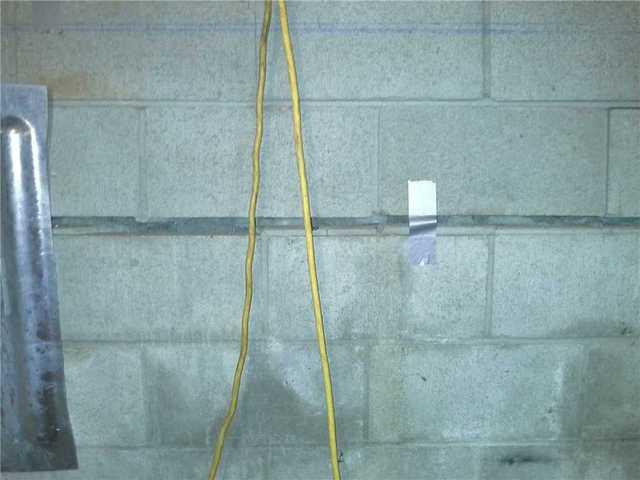Basement Foundation Repair in Marietta, SC
Challenge
We install a lot of Wall Anchors in this business, but this may have been the most significant damage that we've seen from walls bowing inward. This homeowner had waited quite awhile before calling All-Dry to come and assess the issue and the best solution to fix it. Fortunately, the problem was not completely unsalvageable, so our Specialist Mike Lee was able to come up with a solution.
This homeowner had exhausted almost all of her options, she had tried several other "solutions" and talked to many different companies, but she came down with two different solutions. The first was to completely remove the foundation of the home and re-pour the foundation walls (this, however, would be extremely costly, and there is still a risk of damage to this very, very old home), the other option was to have All-Dry and our expert crews come into the home and install our wall anchors to help salvage and improve this wall.
Solution
While the solution was a simple one, the installation was slightly more difficult. Our Service Design Specialists and crews work together to determine the most effective and safe place to install each Wall Anchor. Getting the height on the wall, spacing between each anchor and many other factors come into play when installing wall anchors. The foreman and our Systems Design Specialist worked together to determine the correct area to install each anchor in a way that the weight of the wall is equally dispersed on each wall anchor, to strengthen them.
In total, our crew had to install eight wall anchors on this basement wall. There is a good bit of technical training that our crews go through in order to install wall anchors correctly, but in the most simple sense, wall anchors are a very simple "machine". Our crew went into the basement and marked exactly where each wall anchor will be installed on the basement wall. Then go outside to locate where the outside wall anchor will be placed. Once they found these areas for each of the eight anchor plates, they went to the digging. The depth of the dig changes from job to job, but this job required just a few feet of digging.
After all of the digging was done, the fun part began; installing the anchor plates and rod, and tightening the system. The outside anchor is placed in the hole that was dug, then a long, metal rod is drilled through the basement wall, then fastened to the outside plate. Once this has been done for each plate, the inside wall anchor plates are attached to the inside and slowly tightened until the wall is as corrected as they can at the time. The great thing about wall anchors is that they can often be tightened every few months in order continually correct the issue.
Project Summary
Installing Contractor: All-Dry of the Carolinas
Systems Design Specialist: Mike Lee
Project Foreman: Francisco Gamez
Products Installed: Wall Anchors





